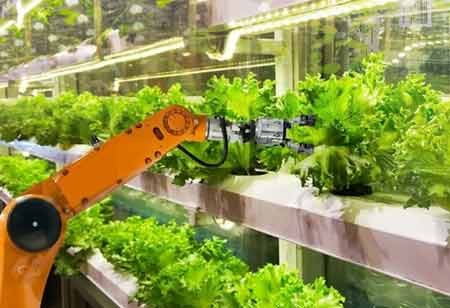Thank you for Subscribing to Agri Business Review Weekly Brief
How Does Vertical Farming Work?
By 2050, the world's population is predicted to reach 9.7 billion, creating a massive feeding burden.

By
Agri Business Review | Friday, April 22, 2022
Stay ahead of the industry with exclusive feature stories on the top companies, expert insights and the latest news delivered straight to your inbox. Subscribe today.
While Vertical farming methods are still in their infancy, they will be crucial in the future to meet the problem of increasing food demand.
Fremont, CA: By 2050, the world's population is predicted to reach 9.7 billion, creating a massive feeding burden. Every day, humans lose arable land as a result of industrial development and urbanization. Increasing food consumption as a result of population growth combined with ever-dwindling arable land is one of the greatest issues humanity faces. Many believe that vertical farming holds the key to resolving this issue.
What is vertical farming?
Vertical farming is the practice of growing food vertically. Rather than cultivating vegetables and other foods on a single level, as in a field or greenhouse, this method grows crops in vertically stacked levels that are frequently integrated into other structures, such as a skyscraper, shipping containers, or refurbished warehouses.
This innovative concept utilizes controlled environment agriculture (CEA) technology and indoor agricultural practices. The ability to produce foods and pharmaceuticals indoors is enabled by the artificial control of temperature, light, humidity, and gases. Vertical farming resembles greenhouses in many aspects since metal reflectors and artificial lights supplement natural sunlight. Vertical farming's major objective is to maximize crop production in a limited amount of space.
How does vertical farming work?
Awareness of vertical farming requires an understanding of four essential areas: The physical arrangement, the lighting, the growing medium, and the sustainability elements all play a role in this.
To begin, vertical farming's primary objective is to increase food production per square meter. Crops are grown in stacked levels in a tower life structure to attain this purpose. Second, a precise balance of natural and artificial light is used to maintain the ideal degree of illumination in the room. Lighting efficiency is increased by the use of technologies such as revolving beds.
Thirdly, aeroponic, aquaponic, or hydroponic growing materials are utilized in place of soil. Vertical farming makes extensive use of non-soil mediums. Finally, vertical farming utilizes a variety of sustainable characteristics to offset the energy costs associated with growing. Indeed, vertical farming consumes 95 percent less water than conventional farming.





